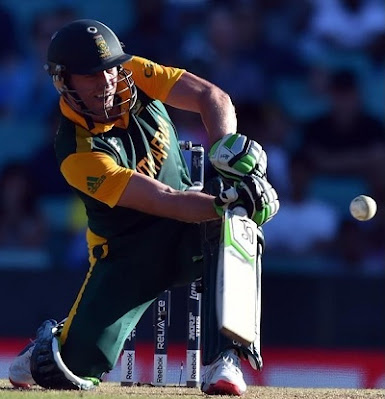The Big Three
World cricket has a very packed calendar all over the year with all sorts of bilateral and multi team tournaments filled up. According to the FTP, every test playing nation has to play one another once in every two years. Although, the FTP is designed by the ICC, the number of matches played on a tour is more or less decided by the respective national boards. As a result, we see an unevenness in the number of matches being played between the teams. The sole reason behind the imbalance is the revenue generated by conduction of a series. More monetarily rewarding a series is, more is the number of matches being played on the tour.
The model of The Big Three was adopted by the ICC in 2014. The model gave a major chunk of ICC's revenue to three countries viz. India, Australia and England. The model was introduced to reward the three nations for their contribution to the ICC in terms of revenue generation. The three boards generate more than 50% of world cricket's revenue with India being the front runner among the three. According to the model, India would have got 20.3%, England 4.4%, and Australia 2.7% of the total revenue from the ICC for the 2015-2023 cycle.
The ICC, however, in 2017 tweaked the revenue sharing model which led to slight decline in the big three's revenue share. While England's and Australia's shares didn't fell significantly, the Indian share dropped remarkably from US$440 millions to US$293 millions. Even though the share drop was significant, the final value, yet again, was at no parity with other boards.
The outcome of uneven revenue generation is that the big three are seen in constant action throughout the year and playing each other on 3 month long tours. Whereas, other nations struggle to get international cricket. No other side other than the big three plays a four match or a five match test series. One may rarely find some five match test series in the recent past not featuring anyone from the big three.
Consider the case of New Zealand, they are undoubtedly one of the best teams in the world for a long time now. They have featured in two consecutive World Cup finals and are now going to play the inaugural World Test Championship final as well. But have we ever seen them play a long test match series? Are they considered a part of a "Big Four"? Do their players earn as much as the players of the big three are paid? Nope, at least not in the recent past where they have been probably the most competent team in the world. They don't even get ICC's major chunk of revenue generated from ICC events and broadcast rights.
New Zealand's exclusion from the above mentioned privileges is backed by the fact that they haven't been able to generate a huge amount of money from broadcast rights like the big three because of their atypical time zone. New Zealand's time zone is evidently inconvenient for most of the cricket lovers all over the globe. Also, New Zealand players do not even produce spicy or controversial stories assisting the social media market. Indian high profile cricketers, for the matter, never fail to provide social media spicy and sensational stories to publish. However good or bad they may perform, they keep the media market busy.
The lack of funding is affecting all teams in the world, except you know who. For instance, West Indies cricket board struggles in finding broadcasters and teams like Ireland have to cancel matches due to lack of funding. The novel corona virus has made the matters worse. The gap between "big" teams and "small" teams is just widening as every year passes and a solution has to be found out before world cricket is left with three-four teams playing one another.
The boards comprising "The Big Three" must take responsibility along with the ICC to organize matches between "The Big Three" and the associate nations to take the great game forward with its expansion to every corner of the globe and not just limiting it to those same 10-15 countries playing it for the last 50 years.




Comments
Post a Comment